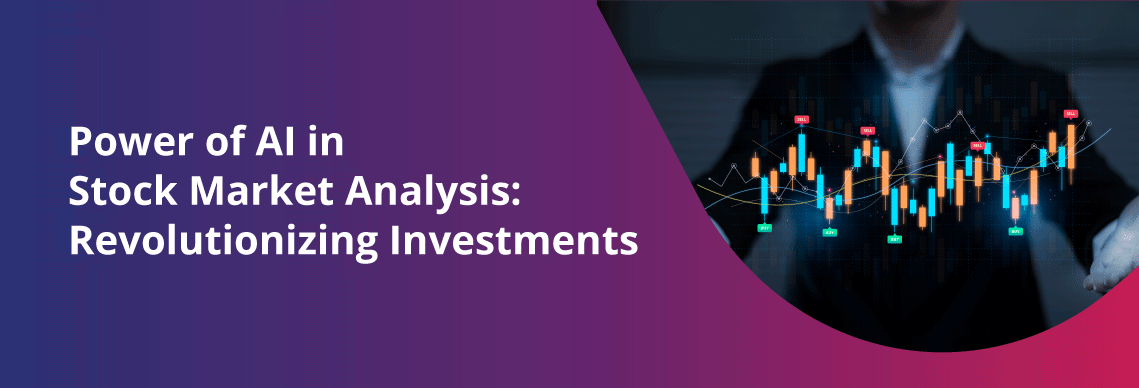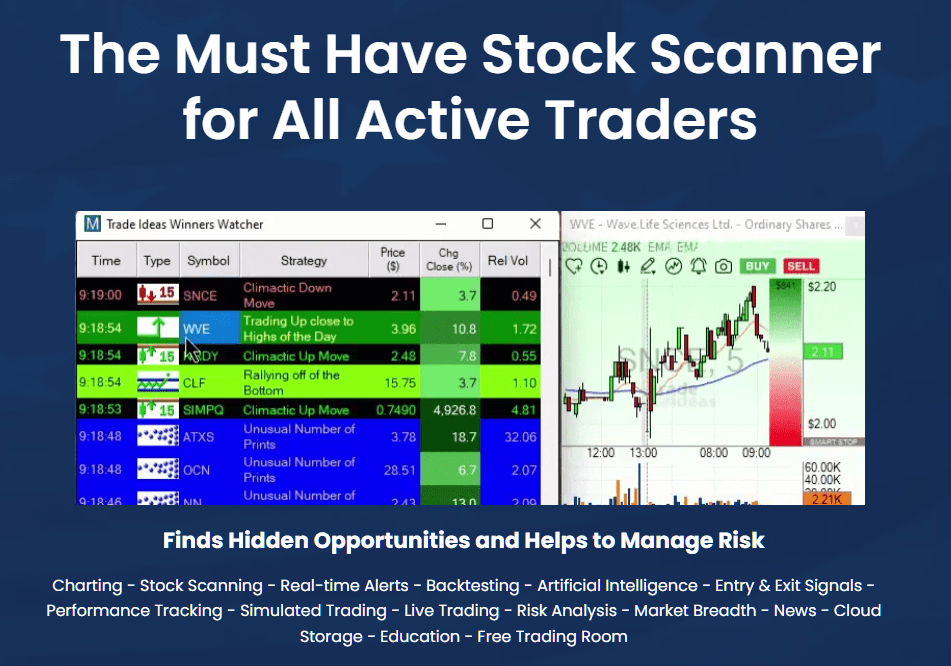Top 10 Tips On Assessing The Market Coverage Of Ai Stock Predicting/Analyzing Trading Platforms
Market coverage is an important element to take into consideration when evaluating AI stock predicting/analyzing trading platforms in that it defines the range and depth of markets and assets which you have access to. A platform with extensive market coverage lets you diversify your portfolio, discover possibilities across the globe, and to adapt to different trading strategies. These are the top 10 suggestions to evaluate the market coverage offered by these platforms:
1. Evaluate Supported Asset Classes
Stocks – Check that the platform you choose to use can provide coverage of the major stock markets (e.g. NYSE NASDAQ LSE HKEX) as well as includes mid-caps, small-caps and large-caps.
ETFs Make sure the platform lets you select from a wide range of ETFs. This gives you an array of exposure.
Options and futures. See if your platform offers derivatives including options, futures or any other leveraged instrument.
The commodities and forex. Find out whether there are any forex pairs available, along with precious metals, energy-related commodities and agricultural commodities.
Cryptocurrencies: Make sure the platform supports major copyright (e.g., Bitcoin, Ethereum) and altcoins.
2. Verify coverage in your area
Global markets: Make sure that the platform is inclusive of major global markets like North America, Europe and Asia-Pacific.
Concentrate on regional markets: Find out if the platform focuses on regions or specific markets that are aligned with your trading goals.
Local exchanges: Verify if your platform supports local and regional exchanges that are relevant to you or your plan.
3. Examine Real-Time vs. Delayed Data
The availability of real-time data is crucial for quick decision making particularly when trading is in the active phase.
Data that is delayed: Find out if delayed data is available at no cost or at a cheaper cost. This could be enough for investors who are looking to invest long-term.
Data latency: Verify whether the platform is able to reduce the latency of real-time data feeds specifically for high-frequency trading.
4. Review the availability of historical data
The depth of historical data: Verify that the platform has ample data (e.g. more than 10 years old) for backtesting.
Find out the precision in historical data.
Corporate actions: Check if the historical information includes dividends and splits of stock.
5. Check the Market Depth and Place an Order Books
Level 2 data: Ensure that the platform has Level 2 information (order book depth) for improved price search and execution.
Bid-ask Spreads: Ensure that the platform displays real-time spreads between bid and ask for precise pricing.
Volume data: Ensure that the platform offers detailed volume data in order to evaluate market liquidity.
6. Review the extent of coverage for Indices and Sectors
Major indices – Ensure the platform is compatible with major indexes like S&P 500 and FTSE 100 for benchmarking.
Sector-specific data: Check whether the platform has data for specific sectors (e.g., technology or healthcare, energy,) to conduct a targeted analysis.
Customized indices. Make sure that the platform can track or create customized indices that meet your criteria.
7. Integrate News and Sentiment Data
Feeds for news: Make sure the platform incorporates real-time feeds of news from reliable sources, like Bloomberg and Reuters for events that affect the market.
Sentiment analysis: Find out whether there are tools to perform sentiment analysis that are based on news articles or other data sources.
Event-driven trades: Verify the platform’s support of events-driven trades (e.g. reports on economic data earnings announcements, etc.).
8. Check for Multi-Market Capabilities for Trading
Cross-markets trading: The platform will allow trading on multiple markets or asset classes using a single user interface.
Conversion of currencies: Find out if the platform allows multi-currency trading and automatic conversion of currencies for international trading.
Support for time zones of different times: Make sure the platform allows trading globally on markets across different time zones.
9. Evaluation of alternative data sources
Alternative data: To get new insights, make sure that the platform incorporates alternative data sources.
ESG Data Find out whether there is any environmental, social or governance (ESG data) included in the platform for socially-responsible investing.
Macroeconomic data: Make sure the platform is able to provide macroeconomic indicators (e.g., inflation, GDP, or interest rates) for analysis of fundamentals.
Review Market Reputation and User Reviews
User feedback: Use user reviews to determine the platform’s reliability and market coverage.
Find out the reputation of the platform in relation to its coverage or industry awards.
Find testimonials that prove the platform’s effectiveness in certain markets and asset classes.
Bonus Tips
Trial period: Try a free trial or demo to evaluate the platform’s market coverage and data quality.
API access: Make sure the API is available on the platform that permits you to programmatically access market data for custom analysis.
Customer support: Ensure the platform has support for market-related inquiries or data-related issues.
Utilizing these guidelines you can accurately assess the coverage of AI software for stock prediction and analyzing trading platforms. You can then choose the trading platform that gives you the market and the data you require for successful trades. Market coverage that is comprehensive allows you to diversify your portfolio, discover new opportunities and be able to adapt to the changing market conditions. See the best for beginners about ai for copyright trading for blog advice including free ai investing app, ai stock picker, using ai to trade stocks, ai stock trading app, best ai stocks, ai investment stock, best ai stocks, trading with ai, ai for trading, ai trading and more.

Top 10 Tips To Assess The Reputation Of Ai Stocks That Predict/Analyse Trading Platforms
To ensure trustworthiness, reliability and efficiency, it’s essential to assess the reputation and reviews of AI-driven prediction platforms and trading platforms. Here are the top 10 ways to assess the reputation and reviews.
1. Check Independent Review Platforms
There are reviews available on trusted platforms like G2, copyright or Capterra.
Why: Independent platforms offer unbiased feedback by real users.
2. Study case studies and reviews
Visit the official website of the platform, or other sites to see user testimonials.
The reason: These insights offer real-time feedback on performance and satisfaction of users.
3. Check out industry recognition as well as expert opinions
Tip: Research to determine if the platform was reviewed or recommended by industry experts, financial analysts, or reputable magazines.
Why Expert endorsements are important: They add credibility to the claims of the platform.
4. Social Media Sentiment
Tip Monitor social media sites (e.g. Twitter. LinkedIn. Reddit.) to discover what people are talking about and what they think about it.
Social media gives you a opportunity to share your opinions and news that aren’t filtering.
5. Verify regulatory compliance
Verify that your platform is compliant to financial regulations such as SEC and FINRA as well as data privacy laws, like GDPR.
The reason: Compliance ensures that the platform is operating legally and ethically.
6. Transparency of Performance Metrics
TIP: Determine if the platform provides transparent performance indicators (e.g., rates of accuracy or ROI, backtesting results).
Transparency builds trust, and also allows users to evaluate the effectiveness of a system.
7. Check the Quality of Customer Support
You can read reviews to see how responsive and effective the customer service is.
Why is this? A reliable customer support service is essential to resolve any issues and ensuring a pleasant customer experience.
8. Red Flags are a good indication of a poor review
Tip Look for repeated complaints. This could be due to poor performance, hidden charges or a lack of updates.
If you have a pattern of bad feedback, it is a sign that there may be an issue with the platform.
9. Evaluation of Community and User Engagement
Tip: Check to see whether there is an active community of users using the platform (e.g. Discord groups, forums) and whether they communicate with their users regularly.
Why is that a active community will indicate user satisfaction and ongoing support.
10. Examine the track record of the company.
Tips: Research the history of the company, its management team, and performance in the area of financial technology.
The reason: A history of success increases confidence in the reliability of the platform and experience.
Compare Multiple Platforms
Compare reviews and ratings to find platforms that best suit your needs.
Following these tips can help you assess the reputation of AI trading and stock prediction platforms. You will be able to select an option that is trustworthy and effective. Check out the top read review about ai trading tools for more examples including ai trader, ai stock picker, ai chart analysis, chart ai for trading, ai stock, ai investing app, ai for copyright trading, stocks ai, ai stock predictions, best ai copyright trading bot and more.
